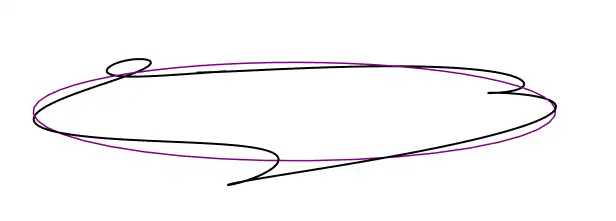You already know that aspects, which are angular distances between planets on the celestial sphere, are cast in a special aspect plane when it comes to primary directions.
In this article, we will describe the equations for finding the aspect degrees in the plane constructed by the French astrologer Jean-Baptiste Morin (Morinus).
[toc]
Why Did Morinus Construct His Aspect Plane?
Since the planet does not belong to the ecliptic but is slightly above/below it due to the inclination of its orbit, astrologers used to construct different circles of aspects when they consider rays of the planet. But J.B. Morinus refuted commonly used approaches because of the following arguments.
- The circle of aspects cannot coincide with the orbital plane since the maximum celestial latitude does not coincide with the orbit's inclination (due to the ellipticity of the orbits)
- Nor does the circle of aspects coincide with the equator. It is because there are simply no planets on this plane. At the same time, the practice of astrology shows that all planets group around the ecliptic. Also, on the ecliptic itself, the usual zodiac aspects are built when we ignore the latitudes of the planets.
- Nor can it coincide with the ecliptic since the planets are above or below that plane. We can safely ignore that latitude when working with secondary motion, but we cannot do it for primary directions. For aspects are the rays emitted from the body of the planets, not from their ecliptic projection.
- Morinus also rejected the idea of constructing artificial circles, such as the Bianchini circle, since it includes the planet's current position but doesn't correspond with its further move. For example, suppose Mars is departing from its apparent North Node ascending above the ecliptic. At the same time, the circle of Bianchini, on the contrary, declines to the ecliptic.

Instead, Morinus proposed a circle of aspects that satisfies two conditions:
- On the one hand, it passes through the planet at a given time.
- On the other hand, it corresponds to the current movement of the planet along its apparent path - the way it moves on the path (approaching or departing ecliptic), the way it moves along the circle of aspect.
- The maximum elevation over the ecliptic, mentioned above, is the inclination of the circle of aspect.
The apparent motion of the planet
Since the planet moves around the Sun in its orbit, which is inclined to the ecliptic, and the Sun moves along the ecliptic, the planet's apparent motion takes a non-trivial form.


The Circle of Aspects
Morin uses the following method to build a circle of aspects.
First, he considers the segment of the path to which the planet $P$ belongs between two consecutive nodes. Then he finds the local extremum of the planet's path in that segment (a point $B$ in the figure below). He uses the latitude of this local extremum as an inclination of the circle of aspects.

Second, he draws a plane that goes through the point $P$ and has a declination we just established, as shown below.

This method can be applied to any point the apparent planet's path.

Equation of the Circle of Aspects
Let's denote the point's latitude by $\delta_P$ and the local extremum on its path by $\delta_{max}$. We also denote the planet's longitude by $\lambda_P$ (it coincides with point $E$ in the figure below).

Right triangles $APE$ and $ABC$ have a common angle. Hence from eq. (3) of spherical triangles, it follows that
$$ \frac{\tan\delta_{max}}{\tan\delta_P} = \frac{\sin 90°}{\sin AE} $$
or
$$ AE = \arcsin \left(\frac{\tan\delta_P}{\tan\delta_{max}} \right) $$
If planet $P$ with north latitude moves from the N. node and is on the way to its local extremum, we call such a planet preceding the N. node (i.e., departing from it). Otherwise, we call the planet following the S. node (i.e., approaching it).
The same definition applies to the planet in southern latitudes. When it moves away from the S. node to its local extremum, we call the planet preceding the S. node. Otherwise, we call it following the N. node.
To calculate the correct longitude of point $A$, we use the following formula:
$$ \lambda_A = \begin{cases} \lambda_P + AE, \text{if P is preceeding} \\ \lambda_P- AE, \text{otherwise} \end{cases} $$
Now we can calculate the $AP$ curve. from eq. (1) of spherical triangles, it follows that
On the other hand, from eq. (1) of spherical triangles, we can write
$$ \frac{\sin\delta_{max}}{\sin 90°} = \frac{\sin\delta_P}{\sin AP}\tag{b} $$
From (a), it follows that:
Let's substitute $\sin\delta_P$ from (b), and we will get
$$ \tan AE = \tan AP \cos \delta_{max} $$
Finally, we have
$$ \begin{cases} \tan AE = \cos\delta_{max} \tan AP \\ \sin\delta_P = \sin\delta_{max}\sin AP \end{cases} $$
Here $AP$ is the planet's longitude on the aspect circle, and $(\lambda_P, \delta_P)$ is the ecliptic coordinates of that planet.
This set of equations converts any longitude of the aspect's circle to equatorial coordinates. In the most general case, we can write:
Here $\partial \delta_p / \partial t$ is a change of the latitude with time. It is negative when the point is approaching the ecliptic.
The set of equation (1) converts arbitrary longitude $\tilde{\lambda}$ of the aspect's circle, drawn through the point $P$ with coordinates $(\lambda_P, \delta_P)$, to ecliptic coordinates $(\lambda, \delta)$.
In particular, you can apply this formula to the aspect points with longitudes $\tilde{\lambda} = \pm i30$, where $i=0..6$, and $AP$ is taken from equation $(b)$.

